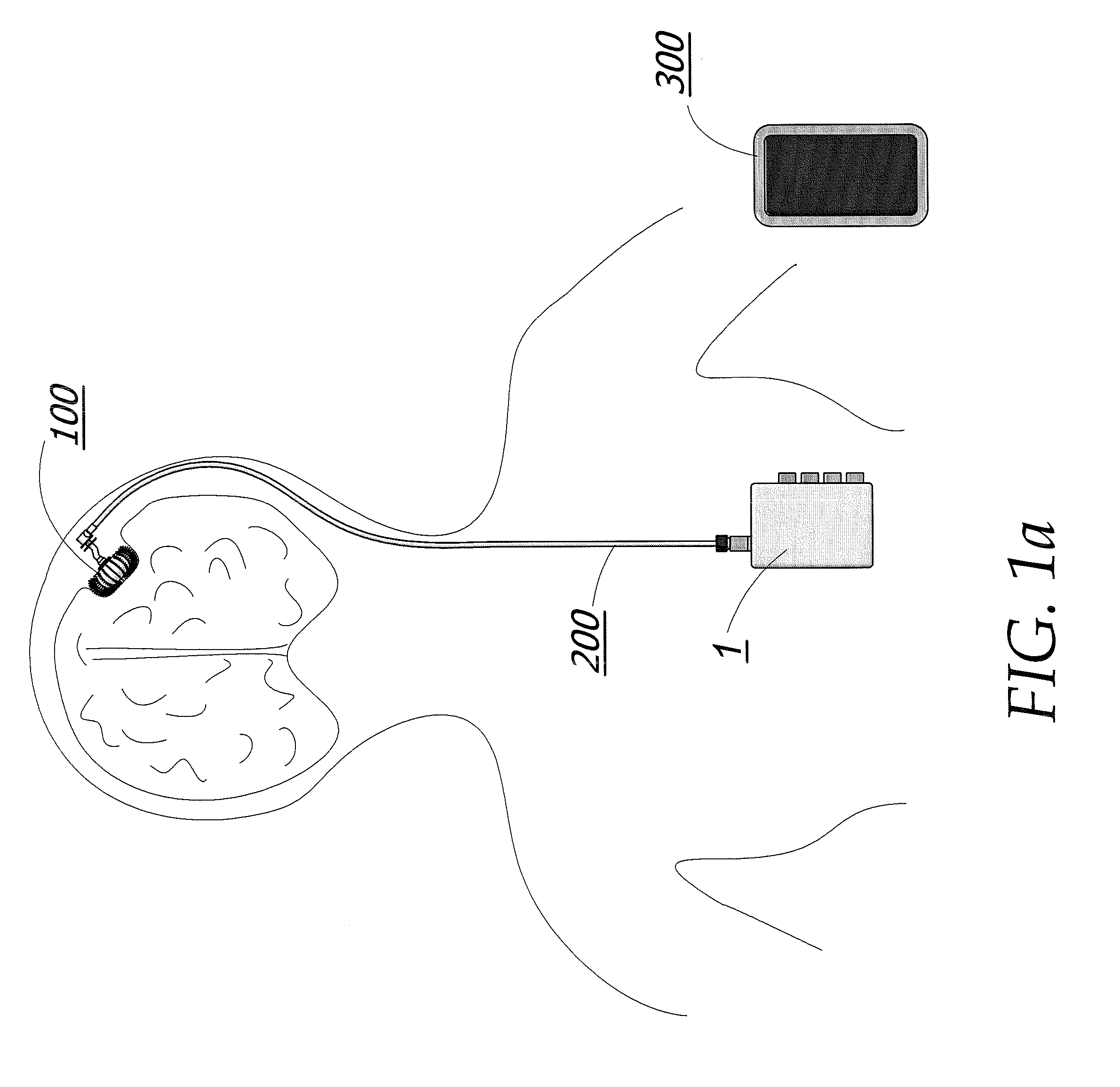Metronomic Convection Enhanced Delivery of Intrathecal Chemotherapy Using an Implanted Magnetic Breather Pump (MBP) for Leptomeningeal Carcinomatosis
a magnetic breather pump and intrathecal chemotherapy technology, applied in the direction of pharmaceutical delivery mechanism, medical preparations, other medical devices, etc., can solve the problems of high mortality rate, narrow options for available treatment, and patients' typical death, so as to reduce tumor burden, improve response, and eliminate tumors
- Summary
- Abstract
- Description
- Claims
- Application Information
AI Technical Summary
Benefits of technology
Problems solved by technology
Method used
Image
Examples
Embodiment Construction
The apparatus is additionally described and disclosed within U.S. patent application Ser. No. 12 / 143,720 filed Jun. 20, 2008, which is herein incorporated by reference in its entirety.
The implantable pump unit 100 of the illustrated embodiment comprises an inner membrane 107 and an outer membrane 106 as seen in FIG. 13c. The space enclosed by inner membrane 107 is a medication reservoir 129 used for storing a medicating agent or a mixture of medicating agents as shown in FIG. 12.
The size and volume of the medication reservoir 129 and thus the spinal pump 100 itself may be varied from patient to patient. A physician will make a determination of how much medication a particular patient will need and then the size of the medication reservoir 129 will be made accordingly. For example, a patient that needs large doses of medication will receive a spinal pump 100 with a larger medication reservoir 129 then a patient who only requires a small dose.
Returning to FIG. 13c, the outer membrane ...
PUM
 Login to View More
Login to View More Abstract
Description
Claims
Application Information
 Login to View More
Login to View More - R&D
- Intellectual Property
- Life Sciences
- Materials
- Tech Scout
- Unparalleled Data Quality
- Higher Quality Content
- 60% Fewer Hallucinations
Browse by: Latest US Patents, China's latest patents, Technical Efficacy Thesaurus, Application Domain, Technology Topic, Popular Technical Reports.
© 2025 PatSnap. All rights reserved.Legal|Privacy policy|Modern Slavery Act Transparency Statement|Sitemap|About US| Contact US: help@patsnap.com



